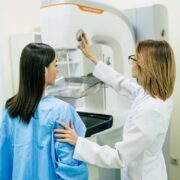Stem cells have been researched to present opportunities to help manage diseases and conditions. However, as stem cell treatments are still relatively new, many patients need clarification on how stem cells work and how the various types differ.
Table of Contents
What Are Stem Cells?
Scientists often refer to stem cells as the building blocks or master cells, as they serve as the origin of all specialized cells in the body. Stem cells can divide to renew themselves indefinitely and differentiate or split to create specialized cells in the body. Since most specialized cells do not divide and renew themselves, they are essential in repairing and restoring damaged cells.
Are All Stem Cells the Same?
All stem cells are not alike. In fact, the body has several types of stem cells present during different times of life. For example, embryonic stem cells are only present during the first stages of human development, while perinatal stem cells are found in umbilical cord blood and amniotic fluid.
Lastly, the body contains adult stem cells in most adult tissues, though only in small quantities. Most stem cell therapies use adult stem cells extracted from bone marrow or fat tissue.
Stem cells also differ in their capabilities, and these capabilities categorize stem cells as multipotent, totipotent, or pluripotent.
How Do Multipotent, Totipotent, and Pluripotent Stem Cells Differ?
The differentiating capabilities of a stem cell determine its potency. Some stem cells can differentiate into any specialized cell in the body, while others are limited.
Totipotent Stem Cells
Totipotent stem cells are all-powerful, as they can create any cell in the body, including placental cells. However, only embryonic cells in the first cell divisions after fertilization are totipotent.
Pluripotent Stem Cells
Pluripotent stem cells are almost as powerful as totipotent stem cells. For example, they can divide to create an entire embryo. However, unlike totipotent cells, they cannot make a placenta and umbilical cord. In addition, they cannot form a totipotent stem cell.
The only pluripotent cells are embryonic stem cells or induced pluripotent stem cells (iPSCs). iPSCs are adult cells that scientists genetically reprogram into a state similar to embryonic cells, allowing them to differentiate to create almost any type of cell.
Multipotent Stem Cells
Multipotent stem cells encompass all other kinds of stem cells. They can differentiate into specialized cells. However, they’re limited to only forming the cell types within a lineage or the specialized cells in the tissue where the multipotent stem cells are found.
For example, the multipotent neural stem cells found in the brain can differentiate into neuronal or glial cells. Similarly, multipotent cells found in bone marrow can become any type of blood cell.
Most stem cell therapies use multipotent adult stem cells, for example, mesenchymal stem cells, to repair and restore specialized cells. The unique capabilities of the different types of stem cells could play a key role in creating new possibilities for managing a wide range of conditions and diseases.
This post was written by a medical professional at https://www.stemedix.com. At Stemedix we provide access to Regenerative Medicine. Regenerative medicine has the natural potential to help improve symptoms sometimes lost from the progression of many conditions.














Comments